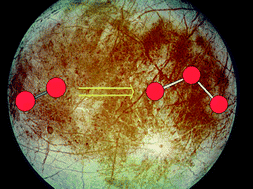On the electron-induced isotope fractionation in low temperature 32O2/36O2 ices—ozone as a case study
Abstract
The formation of six

* Corresponding authors
a
Department of Physics and Astronomy, The Open University, Milton Keynes, UK
E-mail:
n.j.mason@open.ac.uk
b Department of Chemistry and Biochemistry, Florida International University, Miami, USA
c Marquette University, Department of Chemistry, Milwaukee, USA
d
Department of Chemistry, University of Hawaii at Manoa, Honolulu, Hawaii 96822, USA
E-mail:
ralfk@hawaii.edu
e NASA Astrobiology Institute, University of Hawaii at Manoa, Honolulu, USA
The formation of six

 Please wait while we load your content...
Something went wrong. Try again?
Please wait while we load your content...
Something went wrong. Try again?
B. Sivaraman, A. M. Mebel, N. J. Mason, D. Babikov and R. I. Kaiser, Phys. Chem. Chem. Phys., 2011, 13, 421 DOI: 10.1039/C0CP00448K
To request permission to reproduce material from this article, please go to the Copyright Clearance Center request page.
If you are an author contributing to an RSC publication, you do not need to request permission provided correct acknowledgement is given.
If you are the author of this article, you do not need to request permission to reproduce figures and diagrams provided correct acknowledgement is given. If you want to reproduce the whole article in a third-party publication (excluding your thesis/dissertation for which permission is not required) please go to the Copyright Clearance Center request page.
Read more about how to correctly acknowledge RSC content.
 Fetching data from CrossRef.
Fetching data from CrossRef.
This may take some time to load.
Loading related content
